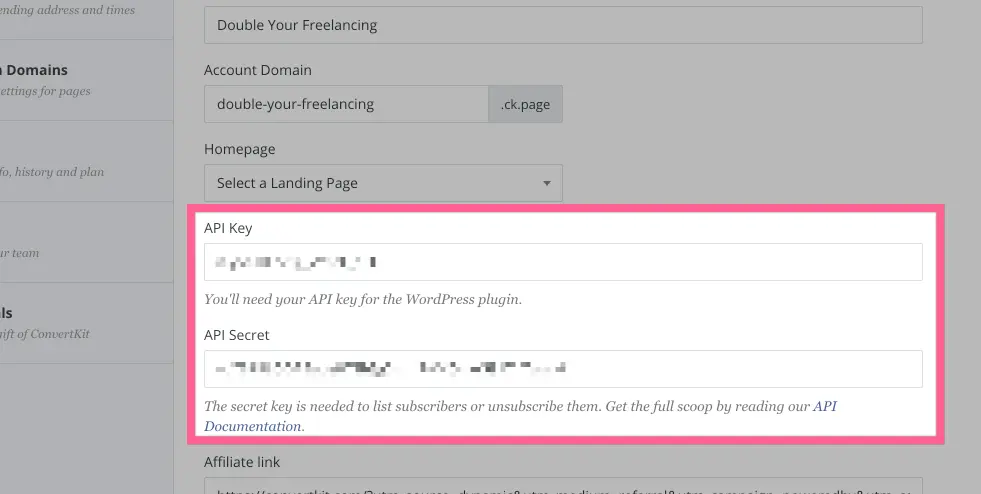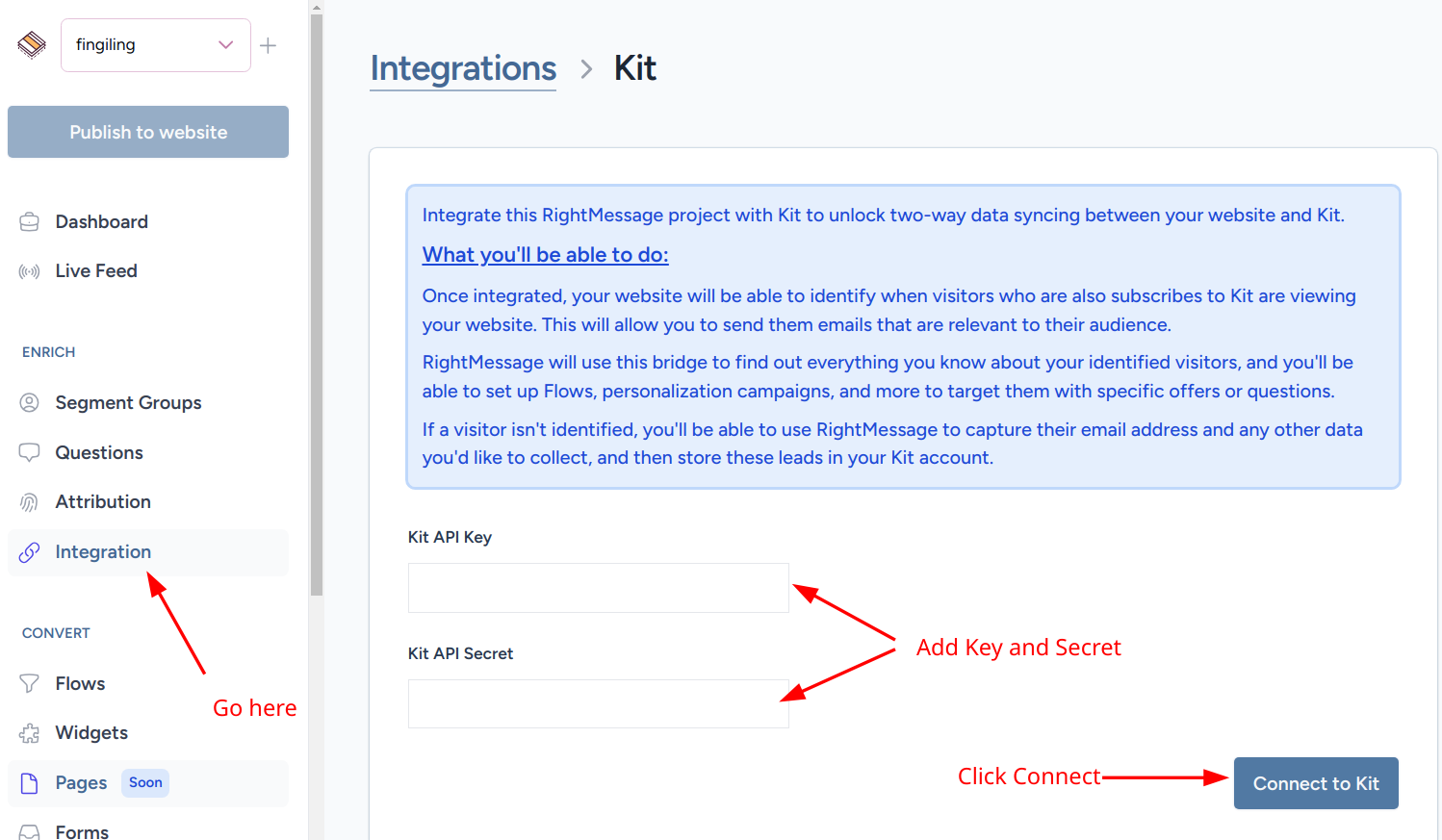Once you’ve integrated your RightMessage account with Kit, you’ll be able to use us to capture new subscribers, segment your Kit (formerly ConvertKit) subscribers, and personalize your website with Kit tags and custom fields.
In this guide, we cover everything you need to know about segmenting and personalizing with Kit + RightMessage.
Linking RightMessage with Kit
To create a link between RightMessage and Kit, all you need to do is add your Kit API Key and API Secret to your RightMessage account.
Here’s how:
Step 1: Find your API Key and API Secret
First, log in to your Kit account and select Your Account → Account Settings
The API Key and API Secret data is listed right below the ‘Homepage’ dropdown.

Step 2: Paste your Key and Secret into the RightMessage integration area
In RightMessage, click on 'Integration' on the left, then choose Kit.
Paste in your API Key and API Secret into the respective fields and click Connect to Kit .

That’s it!
Identifying Kit subscribers on your website
There are a handful of ways that RightMessage “knows” when someone on your website is also in your Kit account.
ID’ing whenever you send an email
Kit can optionally attach a ck_subscriber_id URL parameter to every link that it includes in a Kit-sent email. You’re going to want to enable this – once enabled, you’ll never need to worry about ensuring that your RightMessage-backed website knows when a Kit subscriber is on your website.
First, log in to your Kit account and select Your Account → Account Settings .
Now choose Email on the left navigation menu.
At the bottom of the page (under “Advanced”), toggle Add subscriber_id parameter in email links and then click Save Settings

ID’ing when a Kit form is submitted
If you’re having people opt-in to a Kit form or landing page, then you’re going to need to enable one option within each form or landing page. (If you’re using RightMessage to opt people in via our Flows, there’s no need to do this – it’s automatic.)
On any form or landing page, click Settings and choose the Advanced tab. Toggle on Send subscriber to thank you page and click Save.

This will now pass ck_subscriber_id to your opt-in confirmation page. And as long as the RightMessage script is also included on that page, you’re good to go.
Kit forms and RightMessage’s forms?
Even if you switch entirely to using RightMessage’s forms rather than Kit’s, we recommend that you continue to create Kit forms.
Every unique offer in a Flow, like your newsletter opt-in form, should map to a complimentary newsletter opt-in form you’ve created in Kit.
You’re going to want to do this both for attribution and automation reasons. By creating this link, you’ll be able to go into any subscriber in Kit and see that they’ve submitted so-and-so forms.
You’re not going to need to worry about what you name these forms, or how they’re styled in Kit, etc. We’re just going to be using these forms as references.
The Kit data we can use to segment website visitors
When a visitor is back on your website, RightMessage has immediate access to:
Their list of tags
Their custom fields
Check out our sections on segmentation, website personalization, and Flows for guidance on how to use this data.
Outputting custom fields (like someone’s first name) on your website
With RightMessage, you can output known data (like custom fields) directly to your website. In our guide to adding contextual data and merge tags, we cover how to do this. But below is a bit of Kit-specific context.
To include a Kit custom field value within a text personalization, add: {{ convertkit.customFields.favorite_color }} , replacing favorite_color with your custom field of choice. (This field should not have any spaces. Either include underscores, your_favorite_color , or leave it as a single word, industry .)
An exception should be made for outputting someone’s first name, which is a special custom field in Kit. To output the first_name custom field, use: {{ convertkit.firstName }}
And to output someone’s email address: {{ convertkit.email }}
Note About Kit (formerly ConvertKit) Integration:
While Kit (formerly ConvertKit) has rebranded, RightMessage maintains the original 'convertkit' syntax in our implementation to ensure system stability and backward compatibility. Therefore, when working with Kit custom fields, continue using the convertkit.customFields format in your configurations.
